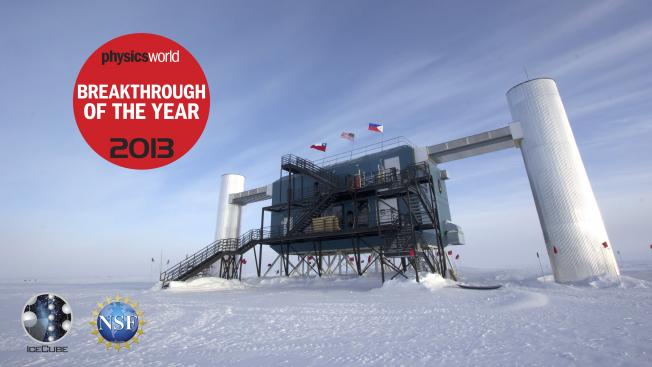Search for nonstandard neutrino interactions with IceCube DeepCore
Physical Review D, Particles and fields American Physical Society 97:7 (2018) ARTN 072009
The dipole anisotropy of AllWISE galaxies
Monthly Notices of the Royal Astronomical Society Blackwell Publishing Inc. 477 (2018) 1772-1781
Abstract:
We determine the dipole in the WISE galaxy catalogue. After reducing star contamination to <0.1% by rejecting sources with high apparent motion and those close to the Galactic plane, we eliminate low redshift sources to suppress the non-kinematic, clustering dipole. We remove sources within {\pm}5{\deg} of the super-galactic plane, as well as those within 1'' of 2MRS sources at redshift z < 0.03. We enforce cuts on the source angular extent to preferentially select distant ones. As we progress along these steps, the dipole converges in direction to within 5{\deg} of the CMB dipole and its magnitude also progressively reduces but stabilises at {\sim}0.012, corresponding to a velocity >1000 km/s if it is solely of kinematic origin. However, previous studies have shown that only {\sim}70% of the velocity of the Local Group as inferred from the CMB dipole is due to sources at z < 0.03. We examine the Dark Sky simulations to quantify the prevalence of such environments and find that <2.1% of Milky Way-like observers in a {\Lambda}CDM universe should observe the bulk flow (> 240 km/s extending to z > 0.03) that we do. We construct mock catalogues in the neighbourhood of such peculiar observers in order to mimic our final galaxy selection and quantify the residual clustering dipole. After subtracting this the remaining dipole is 0.0048 {\pm} 0.0022, corresponding to a velocity of 420 {\pm} 213 km/s which is consistent with the CMB. However the sources (at z > 0.03) of such a large clustering dipole remain to be identified.Reconstruction of a direction-dependent primordial power spectrum from Planck CMB data
Journal of Cosmology and Astroparticle Physics 2018:2 (2018)
Abstract:
We consider the possibility that the primordial curvature perturbation is direction-dependent. To first order this is parameterised by a quadrupolar modulation of the power spectrum and results in statistical anisotropy of the CMB, which can be quantified using 'bipolar spherical harmonics'. We compute these for the Planck DR2-2015 SMICA map and estimate the noise covariance from Planck Full Focal Plane 9 simulations. A constant quadrupolar modulation is detected with 2.2 σ significance, dropping to 2σ when the primordial power is assumed to scale with wave number k as a power law. Going beyond previous work we now allow the spectrum to have arbitrary scale-dependence. Our non-parametric reconstruction then suggests several spectral features, the most prominent at k ∼ 0.006 Mpc-1. When a constant quadrupolar modulation is fitted to data in the range 0.005 ≤ k/Mpc-1 ≤ 0.008, its preferred directions are found to be related to the cosmic hemispherical asymmetry and the CMB dipole. To determine the significance we apply two test statistics to our reconstructions of the quadrupolar modulation from data, against reconstructions of realisations of noise only. With a test statistic sensitive only to the amplitude of the modulation, the reconstructions from the multipole range 30 ≤ ℓ ≤ 1200 are unusual with 2.1σ significance. With the second test statistic, sensitive also to the direction, the significance rises to 6.9σ. Our approach is easily generalised to include other data sets such as polarisation, large-scale structure and forthcoming 21-cm line observations which will enable these anomalies to be investigated further.Erratum: Measurement of the multi-TeV neutrino interaction cross-section with IceCube using Earth absorption
Nature Springer Nature 554:7693 (2018) 554-554



